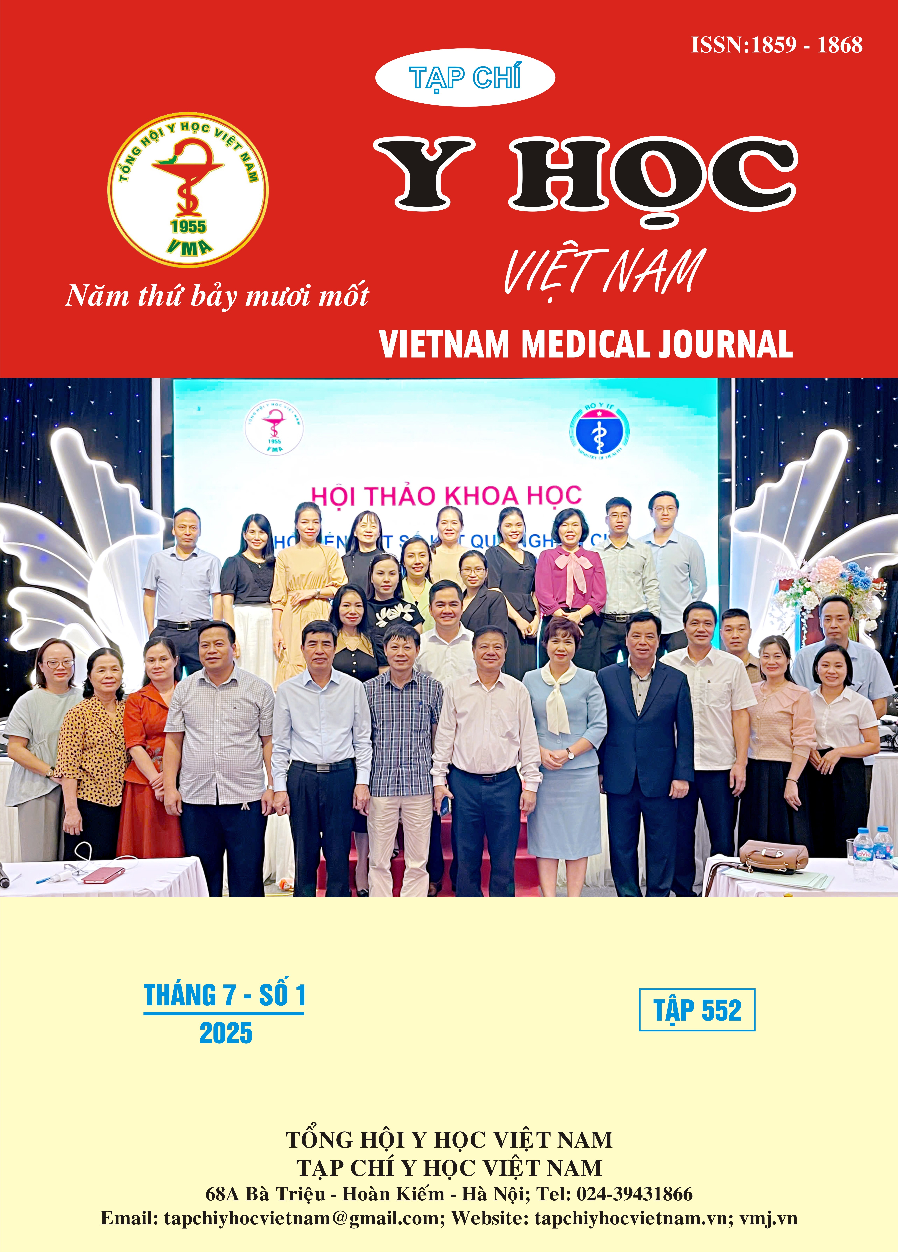EFFECT OF TIMING OF ANTENATAL CORTICOSTEROID INJECTION ON TREATMENT OUTCOMES IN PRETERM INFANTS BORN BETWEEN 28 AND 34 WEEKS OF GESTATION
Main Article Content
Abstract
Background: Preterm birth remains a leading cause of neonatal mortality and morbidity. The administration of antenatal corticosteroids (ACS) has been proven to be an effective intervention that promotes fetal lung maturation and improves outcomes for preterm infants. However, the effectiveness of ACS is closely related to the timing of administration relative to delivery, and real-world data from Vietnam remain limited. Objective: To evaluate the impact of the timing of antenatal corticosteroid (ACS) administration on treatment outcomes in preterm infants born between 28 and 34 weeks of gestation. Methods: A retrospective study was conducted on 335 preterm infants born between 28 and 34 weeks of gestation at the Neonatal Center, National Hospital of Obstetrics and Gynecology. Infants were categorized based on ACS administration status and the interval between administration and delivery (<1 day, 1–7 days, ≥8 days). Primary outcomes compared between groups included neonatal mortality rate, respiratory distress syndrome (RDS) requiring surfactant administration, patent ductus arteriosus (PDA) requiring treatment, and other complications. Results: The mean gestational age was 31.8 weeks. Among the participants, 172 infants (51.3%) received ACS at the National Hospital of Obstetrics and Gynecology. Infants who received ACS within 1–7 days prior to delivery had the lowest incidence of RDS (22%), compared to 38.7% in the non-ACS group and 32.1% in the group receiving ACS <1 day before birth. Infants who did not receive ACS had a 2.2-fold higher risk of developing RDS compared to those who received ACS within 1–7 days (OR=0.45, 95%CI: 0.21–0.94). Preterm infants who did not receive antenatal corticosteroids had a 5.55-fold higher mortality rate compared to those who received antenatal corticosteroids (OR=0.18, 95%CI: 0.04–0.83). Additionally, ACS administration was associated with a reduced risk of PDA (OR=0.11; 95%CI: 0.01–0.92). Administration of ACS either too early (≥8 days) or too late (<1 day) resulted in diminished protective effects. Conclusions: Administration of corticosteroids within 1–7 days prior to preterm birth between 28 and 34 weeks of gestation provides optimal benefits in reducing respiratory complications and neonatal mortality. Accurate prediction of preterm birth and appropriate timing of corticosteroid administration are essential to maximize clinical outcomes.
Article Details
Keywords
antenatal corticosteroids, preterm birth, respiratory distress syndrome, patent ductus arteriosus, hyaline membrane disease
References
2. Battarbee AN, Ros ST, Esplin MS, Biggio J, Bukowski R, Parry S, et al. Optimal timing of antenatal corticosteroid administration and preterm neonatal and early childhood outcomes. Am J Obstet Gynecol MFM. 2020 Feb;2(1): 100077. doi: 10.1016/j.ajogmf.2019.100077. Epub 2019 Dec 17. PMID: 32905377; PMCID: PMC7469940.
3. Melamed N, Shah J, Soraisham A, Yoon EW, Lee SK, Shah PS, et al. Association Between Antenatal Corticosteroid Administration-to-Birth Interval and Outcomes of Preterm Neonates. Obstet Gynecol. 2015 Jun;125(6):1377-1384. doi: 10.1097/ AOG. 0000000000000840. PMID: 26000509.
4. Morhart P, Gärtner J, Weiss C, Stumpfe FM, Dammer U, Faschingbauer F, Fahlbusch FB, Beckmann MW, Kehl S. Influence of Timing of Antenatal Corticosteroid Administration on Morbidity of Preterm Neonates. In Vivo. 2022 Jul-Aug;36(4): 1777-1784. doi: 10.21873/invivo. 12891. PMID: 35738606; PMCID: PMC9301426.
5. Frändberg J, Sandblom J, Bruschettini M, Maršál K, Kristensen K. Antenatal corticosteroids: a retrospective cohort study on timing, indications and neonatal outcome. Acta Obstet Gynecol Scand. 2018 May;97(5):591-597. doi: 10.1111/aogs.13301. Epub 2018 Feb 22. PMID: 29360141.


